Evaluierung von Subventionsprogrammen
Diese Forschungsgruppe untersucht die Effekte von Produktions- und Wissensnetzwerken auf die Produktivität von Unternehmen und Regionen. Darüber hinaus werden Wirkungen staatlicher Förderprogramme für Forschung und Entwicklung sowie regionalpolitischer Programme auf die Leistungsfähigkeit von Unternehmen und Regionen evaluiert.
Zentrum für evidenzbasierte Politikberatung (IWH-CEP)
Forschungscluster
Wirtschaftliche Dynamik und StabilitätIhr Kontakt

Mitglied - Abteilung Präsidialbereich
PROJEKTE
09.2019 ‐ 09.2022
Etablierung einer evidenzbasierten Evaluationskultur für industriepolitische Fördermaßnahmen in Deutschland (EVA-KULT)
Europäischer Fonds für regionale Entwicklung (EFRE)
Das Vorhaben dient dem Ausbau des Zentrums für evidenzbasierte Politikberatung am Leibniz-Institut für Wirtschaftsforschung Halle (IWH-CEP).
01.2018 ‐ 12.2020
Vernetzt wachsen - Innovatives Sachsen-Anhalt durch digitale Geschäftsmodelle (Kompetenzzentrum 4.0)
Bundesministerium für Wirtschaft und Energie (BMWi)
01.2017 ‐ 12.2018
Politische Partizipation in Ostdeutschland
Bundesministerium für Wirtschaft und Energie (BMWi)
12.2015 ‐ 11.2018
Sozioökonomische Effekte der Erforschung innovativer Ansätze für die POC-Diagnostik
Bundesministerium für Bildung und Forschung (BMBF)
Teilvorhaben im Verbundprojekt “POC-Sensorplattform für chronisch-entzündliche Atemwegserkrankungen (EXASENS)”. Neun Leibniz-Institute arbeiten gemeinsam im Pilotprojekt EXASENS an der Erforschung einer Point-of-Care-Technologie zur Vorhersage und Diagnose von chronisch-entzündlichen Atemwegserkrankungen. Der Verbund wird vom Bundesministerium für Bildung und Forschung (BMBF) mit 6,25 Millionen Euro gefördert und liefert einen Beitrag zum Ausbau und zur Stärkung des Themenfeldes Gesundheitstechnologien.
Vgl. Pressemitteilung des Leibniz-Institut für Photonische Technologien (IPHT), Jena.
02.2017 ‐ 02.2018
Bedeutung außeruniversitärer Forschungseinrichtungen für die Entwicklung von Betrieben und Regionen
Bundesministerium für Bildung und Forschung (BMBF)
01.2015 ‐ 12.2016
Evaluierung der GRW-Förderung in Sachsen-Anhalt
Investitionsbank Sachsen-Anhalt
Referierte Publikationen
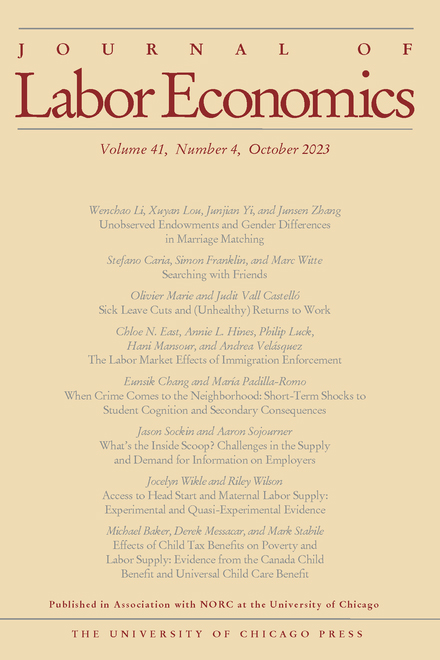
Unemployment in the Great Recession: A Comparison of Germany, Canada, and the United States
in: Journal of Labor Economics, S1 Part 2 2016
Abstract
This paper looks at the surprisingly different labor market performance of the United States, Canada, Germany, and several other OECD countries during and after the Great Recession of 2008–9. A first important finding is that the large employment swings in the construction sector linked to the boom and bust in US housing markets is an important factor behind the different labor market performances of the three countries. We also find that cross-country differences among OECD countries are consistent with a conventional Okun relationship linking gross domestic product growth to employment performance.

The Structure and Evolution of Inter-sectoral Technological Complementarity in R&D in Germany from 1990 to 2011
in: Journal of Evolutionary Economics, Nr. 4, 2015
Abstract
Technological complementarity is argued to be a crucial element for effective R&D collaboration. The real structure is, however, still largely unknown. Based on the argument that organizations’ knowledge resources must fit for enabling collective learning and innovation, we use the co-occurrence of firms in collaborative R&D projects in Germany to assess inter-sectoral technological complementarity between 129 sectors. The results are mapped as complementarity space for the Germany economy. The space and its dynamics from 1990 to 2011 are analyzed by means of social network analysis. The results illustrate sectors being complements both from a dyadic and portfolio/network perspective. This latter is important, as complementarities may only become fully effective when integrated in a complete set of different knowledge resources from multiple sectors. The dynamic perspective moreover reveals the shifting demand for knowledge resources among sectors at different time periods.
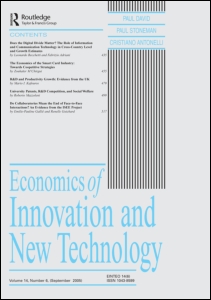
R&D Cooperation with Scientific Institutions: A Difference-in-difference Approach
in: Economics of Innovation and New Technology, Nr. 5, 2016
Abstract
Economists and business managers have long been interested in the impact of research and development (R&D) cooperation with scientific institutions on the innovation performance of firms. Recent research identifies a positive correlation between these two variables. This paper aims to contribute to the identification of the relationship between R&D cooperation with scientific institutions and the product and process innovation performance of firms by using a difference-in-difference approach. In doing so, we distinguish between two different types of scientific institutions: universities and governmental research institutes. For the econometric analyses, we use data from the German Community Innovation Survey. In total, data from up to 560 German service and manufacturing firms are available for the difference-in-difference analyses. The results suggest that R&D cooperation with universities and governmental research institutes has a positive effect on both product innovation and process innovation performance of firms.
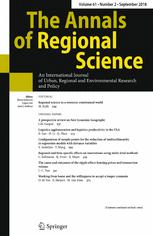
On the Trail of Core–periphery Patterns in Innovation Networks: Measurements and New Empirical Findings from the German Laser Industry
in: Annals of Regional Science, Nr. 1, 2015
Abstract
It has been frequently argued that a firm’s location in the core of an industry’s innovation network improves its ability to access information and absorb technological knowledge. The literature has still widely neglected the role of peripheral network positions for innovation processes. In addition to this, little is known about the determinants affecting a peripheral actors’ ability to reach the core. To shed some light on these issues, we have employed a unique longitudinal dataset encompassing the entire population of German laser source manufacturers (LSMs) and laser-related public research organizations (PROs) over a period of more than two decades. The aim of our paper is threefold. First, we analyze the emergence of core–periphery (CP) patterns in the German laser industry. Then, we explore the paths on which LSMs and PROs move from isolated positions toward the core. Finally, we employ non-parametric event history techniques to analyze the extent to which organizational and geographical determinates affect the propensity and timing of network core entries. Our results indicate the emergence and solidification of CP patterns at the overall network level. We also found that the paths on which organizations traverse through the network are characterized by high levels of heterogeneity and volatility. The transition from peripheral to core positions is impacted by organizational characteristics, while an organization’s geographical location does not play a significant role.
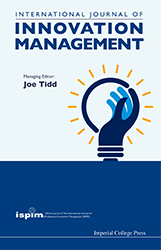
R&D Collaboration for Environmental Innovation
in: International Journal of Innovation Management, Nr. 1, 2015
Abstract
FuE-Kooperationen spielen eine bedeutende Rolle bei der Schaffung von Umweltinnovationen. Allerdings zeigt uns die Literatur, dass FuE-Kooperationen nicht immer vorteilhaft sind. Daher ist eine differenziertere Betrachtungsweise des Einflusses von FuE-Kooperationen auf die Fähigkeit von Unternehmen, Umweltinnovationen hervorzubringen, notwendig. Das Papier untersucht diesen Zusammenhang und differenziert dabei nach verschiedenen Typen von Kooperationspartnern wie Kunden, Lieferanten, Universitäten, staatlichen Forschungseinrichtungen, Konkurrenten, Beratern und anderen Firmen innerhalb der gleichen Firmengruppe. Zudem wird der Frage nachgegangen, ob Diversität von Kooperationspartnern einen Einfluss auf die Umweltinnovationsfähigkeit von Unternehmen hat. Dabei werden Daten von 2337 deutschen Unternehmen für eine Regressionsanalyse verwendet. Deutlich wird, dass FuE-Kooperationen mit Kunden, Lieferanten, Universitäten, staatlichen Forschungseinrichtungen, Beratern und anderen Firmen innerhalb der gleichen Firmengruppe einen signifikant positiven Einfluss auf die Umweltinnovationsfähigkeit haben. FuE-Kooperationen mit Konkurrenten haben keinen signifikanten Einfluss. Die Diversität von FuE-Kooperationspartnern hat ebenfalls einen signifikant positiven Einfluss auf die Umweltinnovationsfähigkeit.
Arbeitspapiere
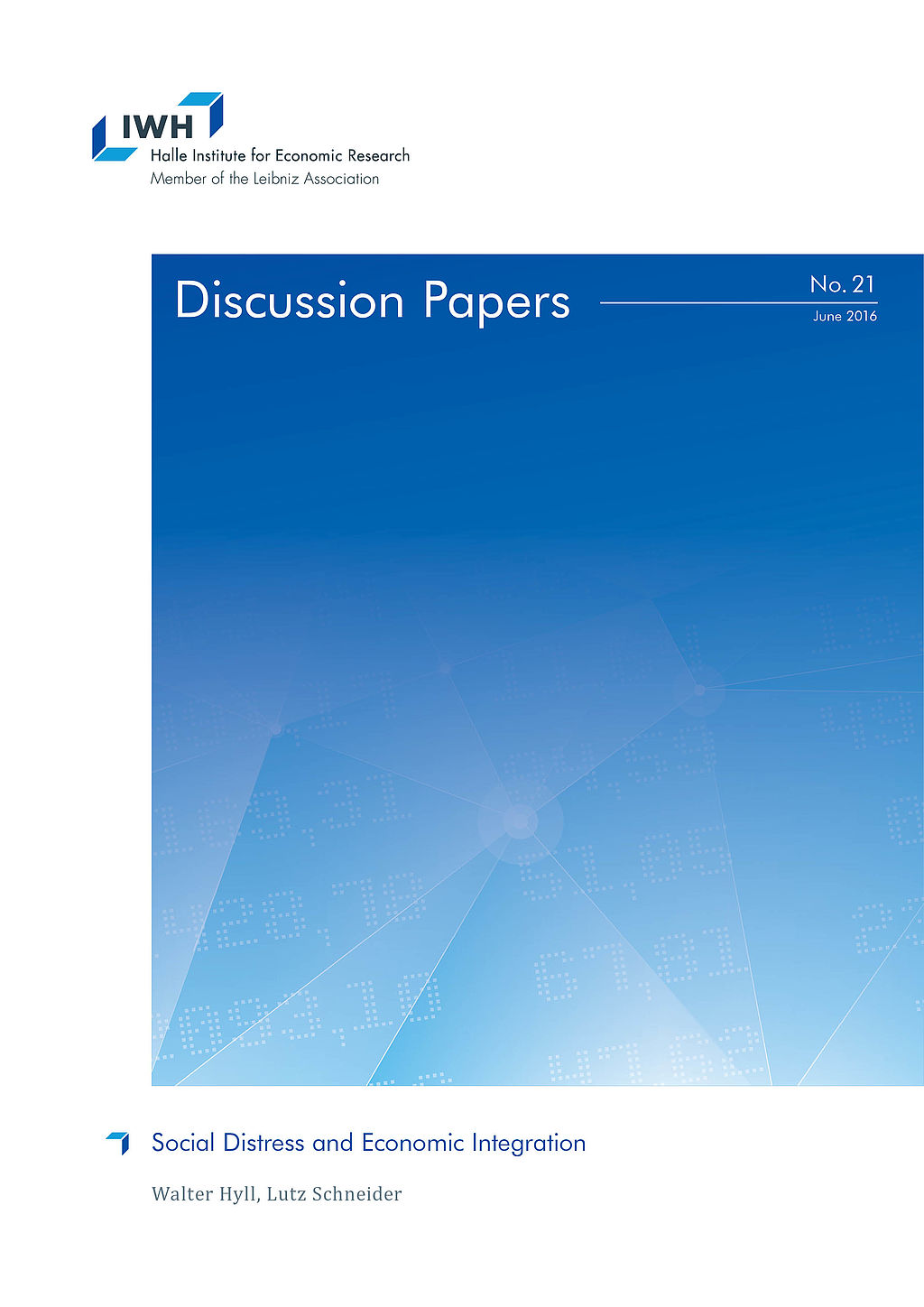
Do Manufacturing Firms Benefit from Services FDI? – Evidence from Six New EU Member States
in: IWH Discussion Papers, Nr. 5, 2015
Abstract
This paper focuses on the effect of foreign presence in the services sector on the productivity growth of downstream customers in the manufacturing sector in six EU new member countries in the course of their accession to the European Union. For this purpose, the analysis combines firm-level information, data on economic structures and annual national input-output tables. The findings suggest that services FDI may enhance productivity of manufacturing firms in Central and Eastern European (CEE) countries through vertical forward spillovers, and thereby contribute to their competitiveness. The consideration of firm characteristics shows that the magnitude of spillover effects depends on size, ownership structure, and initial productivity level of downstream firms as well as on the diverging technological intensity across sector on the supply and demand side. The results suggest that services FDI foster productivity of domestic rather than foreign controlled firms in the host economy. For the period between 2003 and 2008, the findings suggest that the increasing share of services provided by foreign affiliates enhanced the productivity growth of domestic firms in manufacturing by 0.16%. Furthermore, the firms’ absorptive capability and the size reduce the spillover effect of services FDI on the productivity of manufacturing firms. A sectoral distinction shows that firms at the end of the value chain experience a larger productivity growth through services FDI, whereas the aggregate positive effect seems to be driven by FDI in energy supply. This does not hold for science-based industries, which are spurred by foreign presence in knowledge-intensive business services.

Isolation and Innovation – Two Contradictory Concepts? Explorative Findings from the German Laser Industry
in: IWH Discussion Papers, Nr. 1, 2015
Abstract
We apply a network perspective and study the emergence of core-periphery (CP) structures in innovation networks to shed some light on the relationship between isolation and innovation. It has been frequently argued that a firm’s location in a densely interconnected network area improves its ability to access information and absorb technological knowledge. This, in turn, enables a firm to generate new products and services at a higher rate compared to less integrated competitors. However, the importance of peripheral positions for innovation processes is still a widely neglected issue in literature. Isolation may provide unique conditions that induce innovations which otherwise may never have been invented. Such innovations have the potential to lay the ground for a firm’s pathway towards the network core, where the industry’s established technological knowledge is assumed to be located. The aim of our paper is twofold. Firstly, we propose a new CP indicator and apply it to analyze the emergence of CP patterns in the German laser industry. We employ publicly funded Research and Development (R&D) cooperation project data over a period of more than two decades. Secondly, we explore the paths on which firms move from isolated positions towards the core (and vice versa). Our exploratory results open up a number of new research questions at the intersection between geography, economics and network research.

Does Proximity Matter in the Choice of Partners in Collaborative R&D Projects? – An Empirical Analysis of Granted Projects in Germany
in: IWH Discussion Papers, Nr. 12, 2014
Abstract
This paper contributes to the discussion on the importance of physical distance in the emergence of cross-region collaborative Research and Development (R&D) interactions. The proximity theory, and its extensions, is used as a theoretical framework. A spatial interaction model for count data was implemented for the empirical analysis of German data from the period from 2005 to 2010. The results show that all tested proximity measurements (geographical, cognitive, social and institutional proximity) have a significant positive influence on collaboration intensity. The proximity paradox, however, cannot be confirmed for geographical, social and institutional proximity, but for cognitive proximity.

Is Subsidizing Companies in Difficulties an Optimal Policy? An Empirical Study on the Effectiveness of State Aid in the European Union
in: IWH Discussion Papers, Nr. 9, 2014
Abstract
Even though state aid in order to rescue or restructure ailing companies is regularly granted by European governments, it is often controversially discussed. The aims for rescuing companies are manifold and vary from social, industrial and even political considerations. Well-known examples are Austrian Airlines (Austria) or MG Rover (Great Britain). Yet, this study aims to answer the question whether state aid is used effectively and whether the initial aim why aid has been paid has been reached, i.e. the survival of the company. By using data on rescued companies in the EU and applying a survival analysis, this paper investigates the survival rates of these companies up to 15 years after the aid has been paid. In addition, the results are compared to the survival rates of non-rescued companies which have also been in difficulties. The results suggest that despite the financial support, business failure is often only post-poned; best survival rates have firms with long-term restructuring, enterprises in Eastern Europe, smaller firms and mature companies. However, non-funded companies have an even higher ratio to go bankrupt.
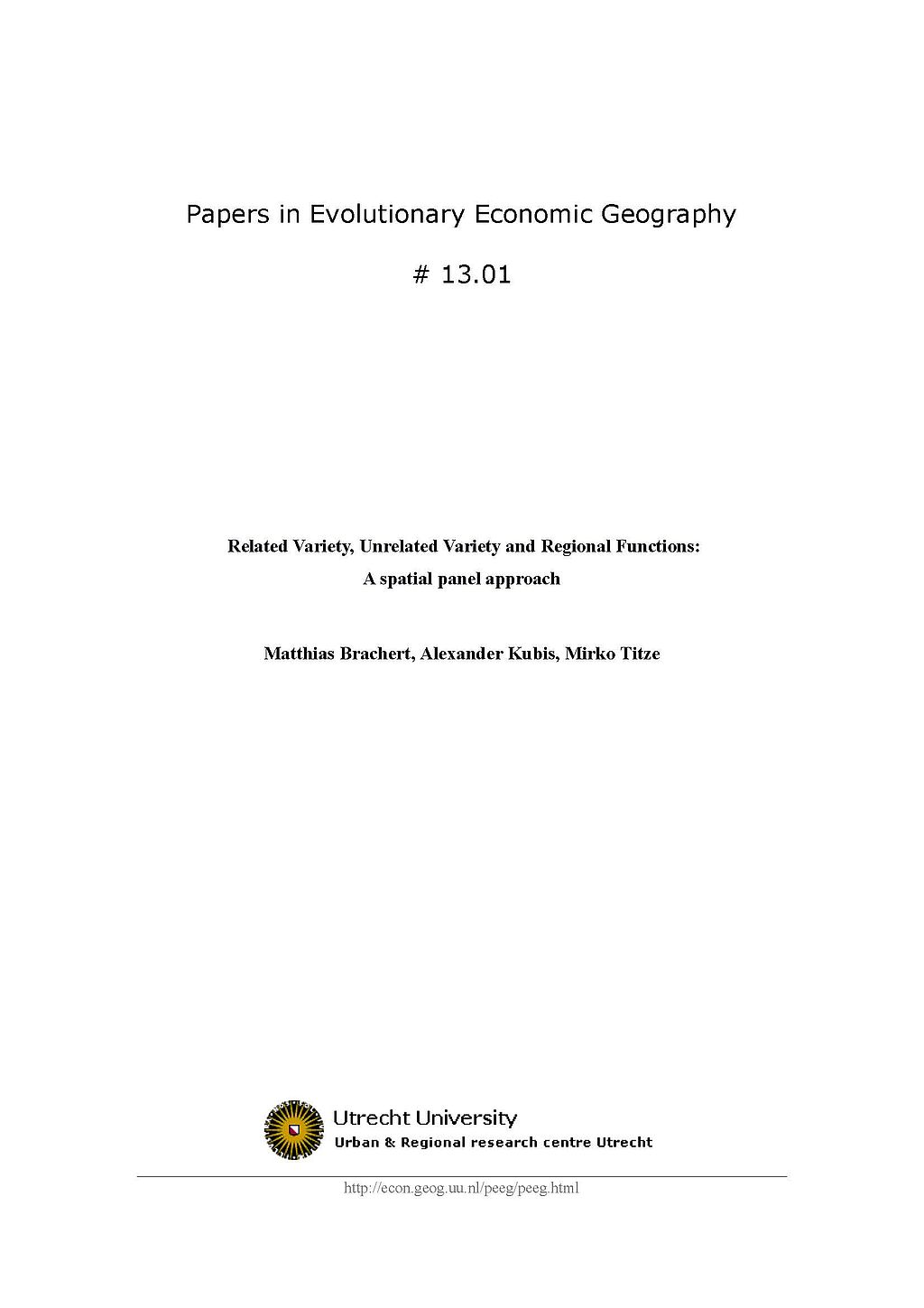
Related Variety, Unrelated Variety and Regional Functions: A spatial panel approach
in: Papers in Evolutionary Economic Geography, 2013
Abstract
The paper presents estimates for the impact of related variety, unrelated variety and the functions a region performs in the production process on regional employment growth in Germany. We argue that regions benefit from the existence of related activities that facilitate economic development. Thereby the sole reliance of the related and unrelated variety concept on standard industrial classifications (SIC) remains debatable. We offer estimations for establishing that conceptual progress can be made when the focus of analysis goes beyond solely considering industries. We develop an industry-function based approach of related and unrelated variety and test our hypothesis by the help of spatial panel approach. Our findings suggest that related variety as same as unrelated variety facilitate regional employment growth in Germany. However, the drivers behind these effects do differ. While the positive effect of related variety is driven by high degrees of relatedness in the regional “R&D” and “White-Collar”-functions, the effects of unrelated variety are spurred by “Blue Collar”-functions in this period.














